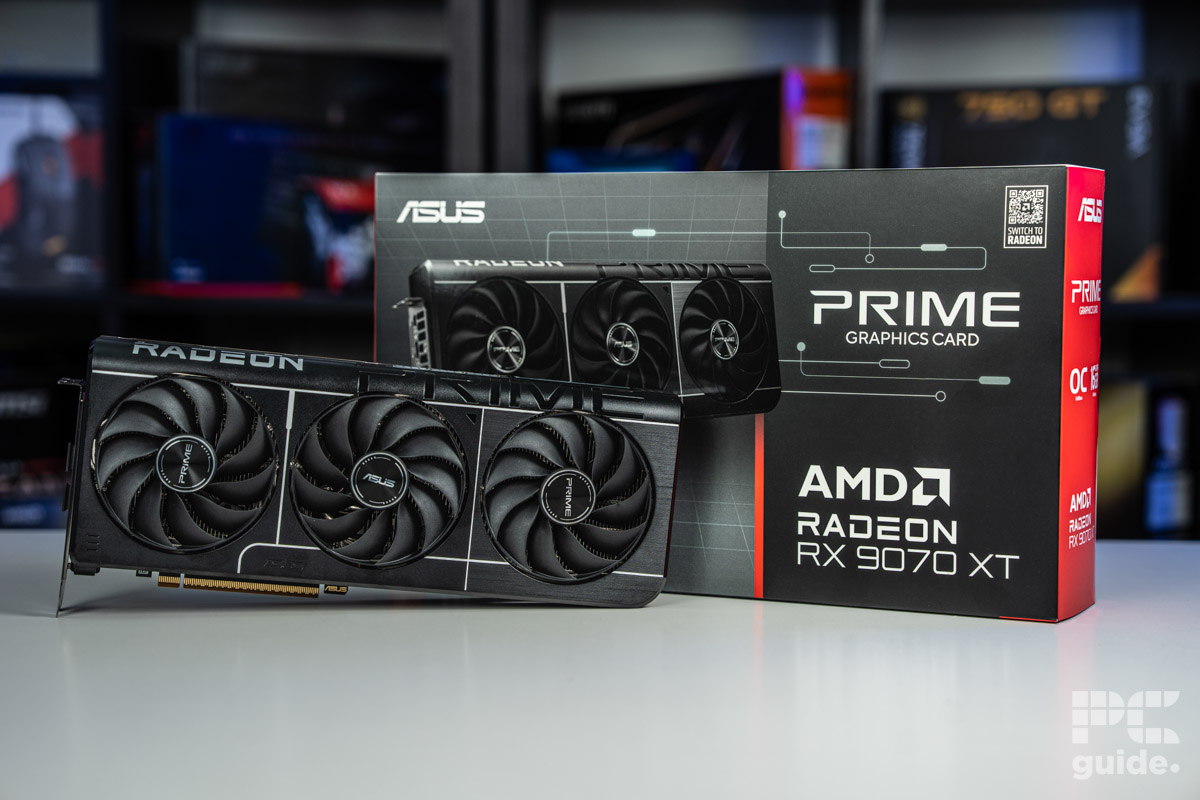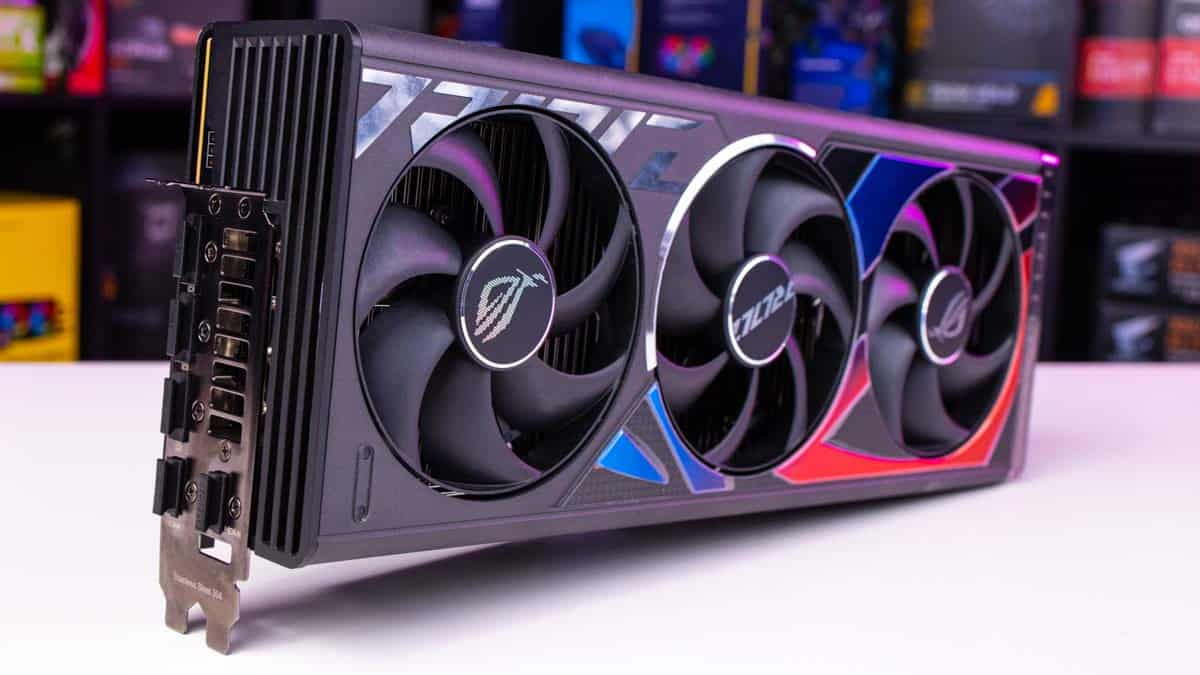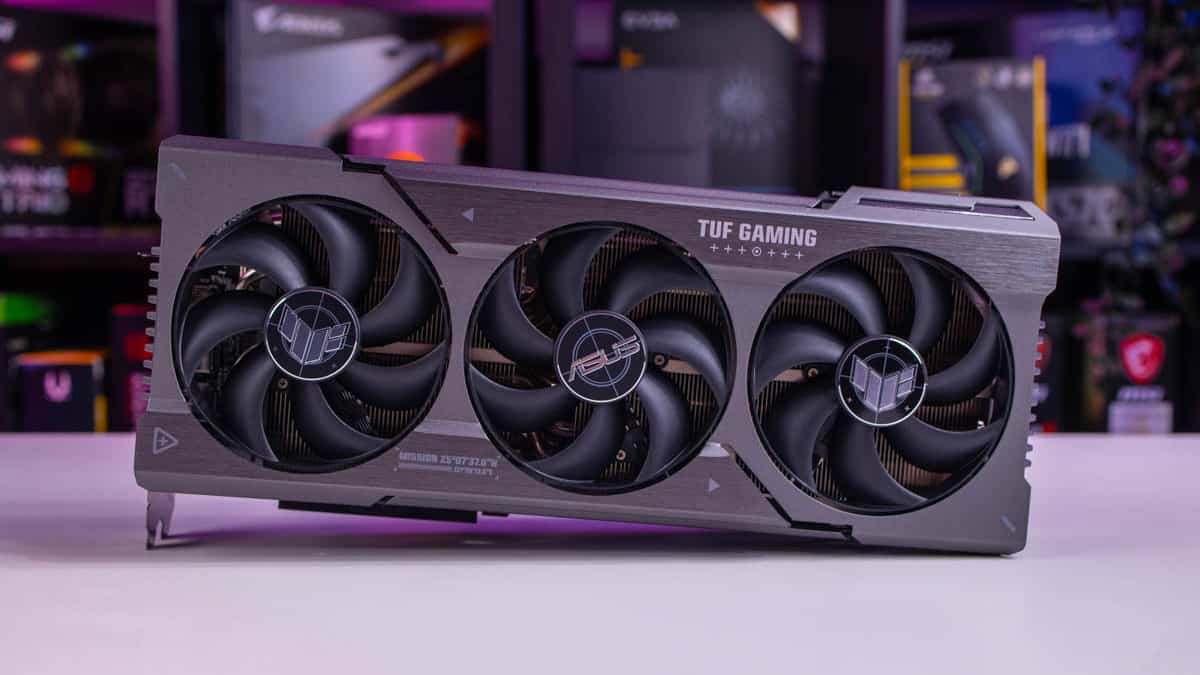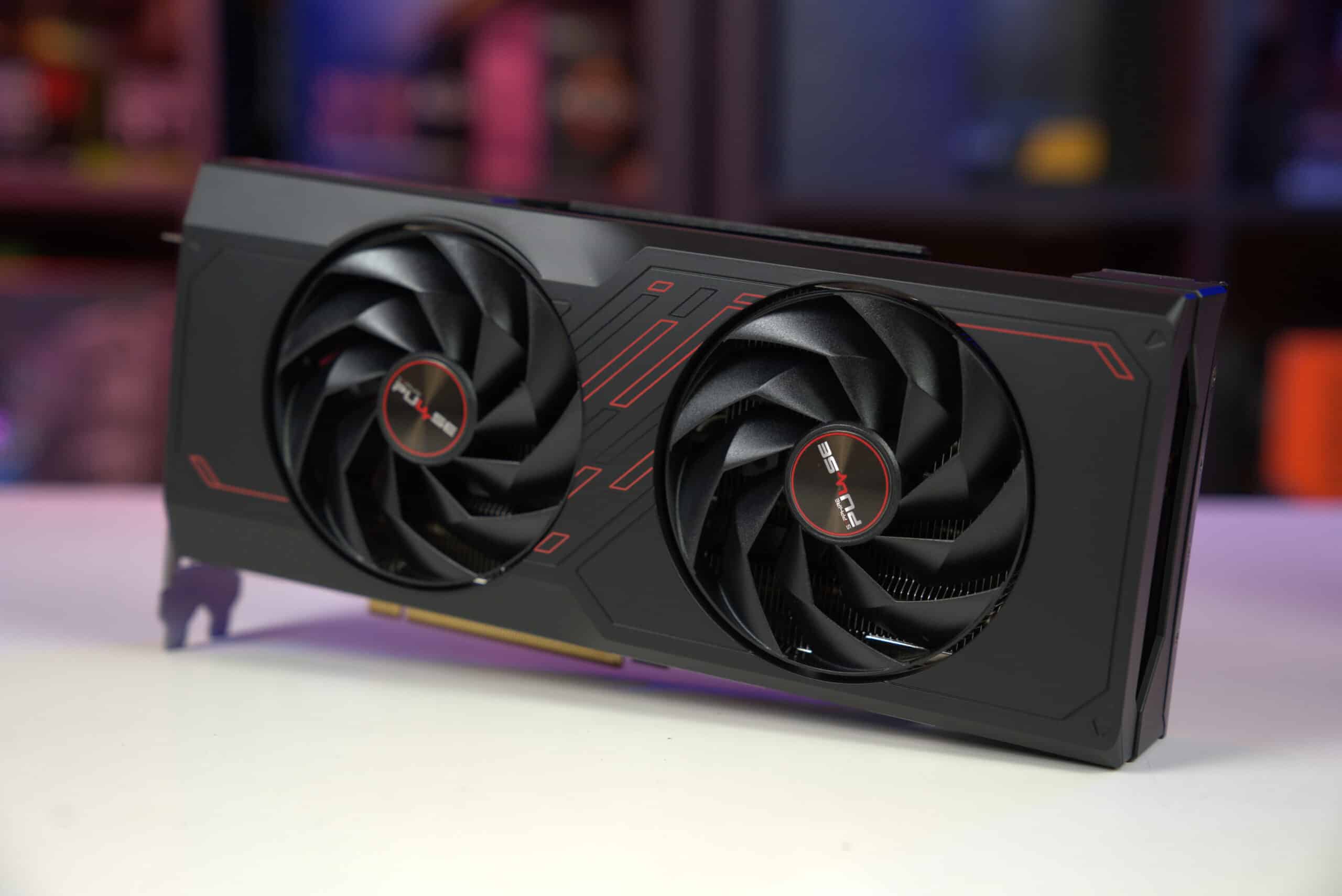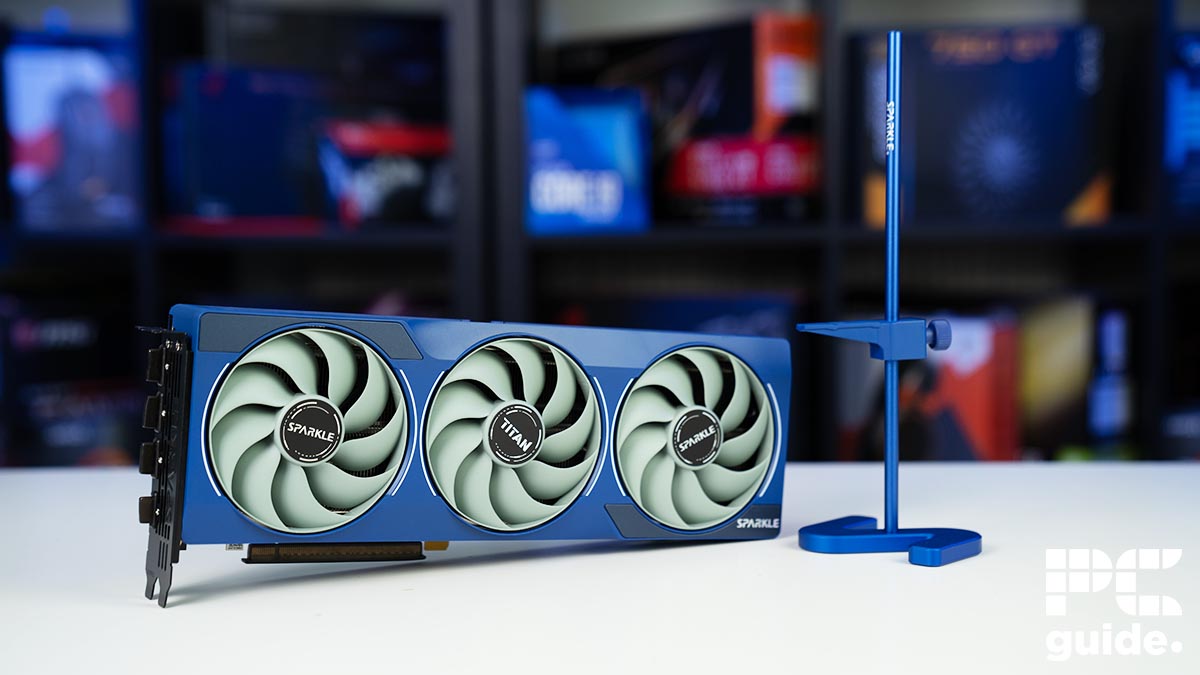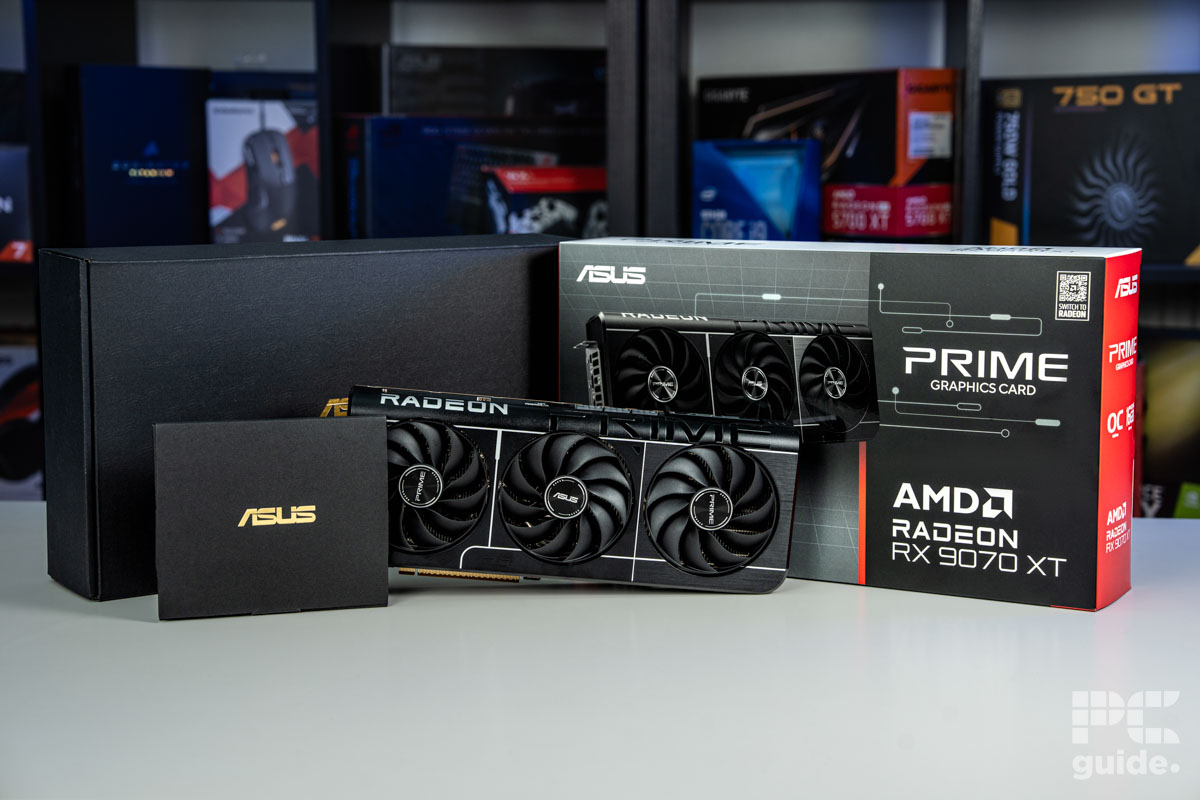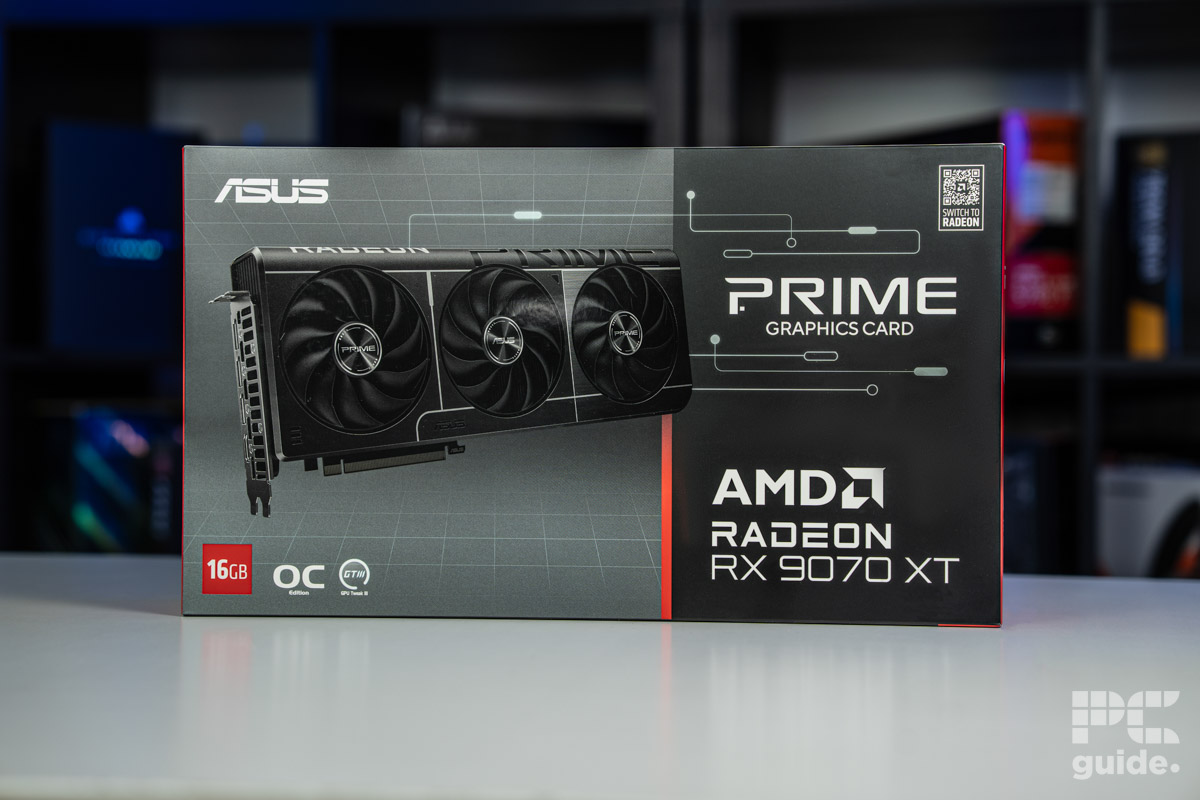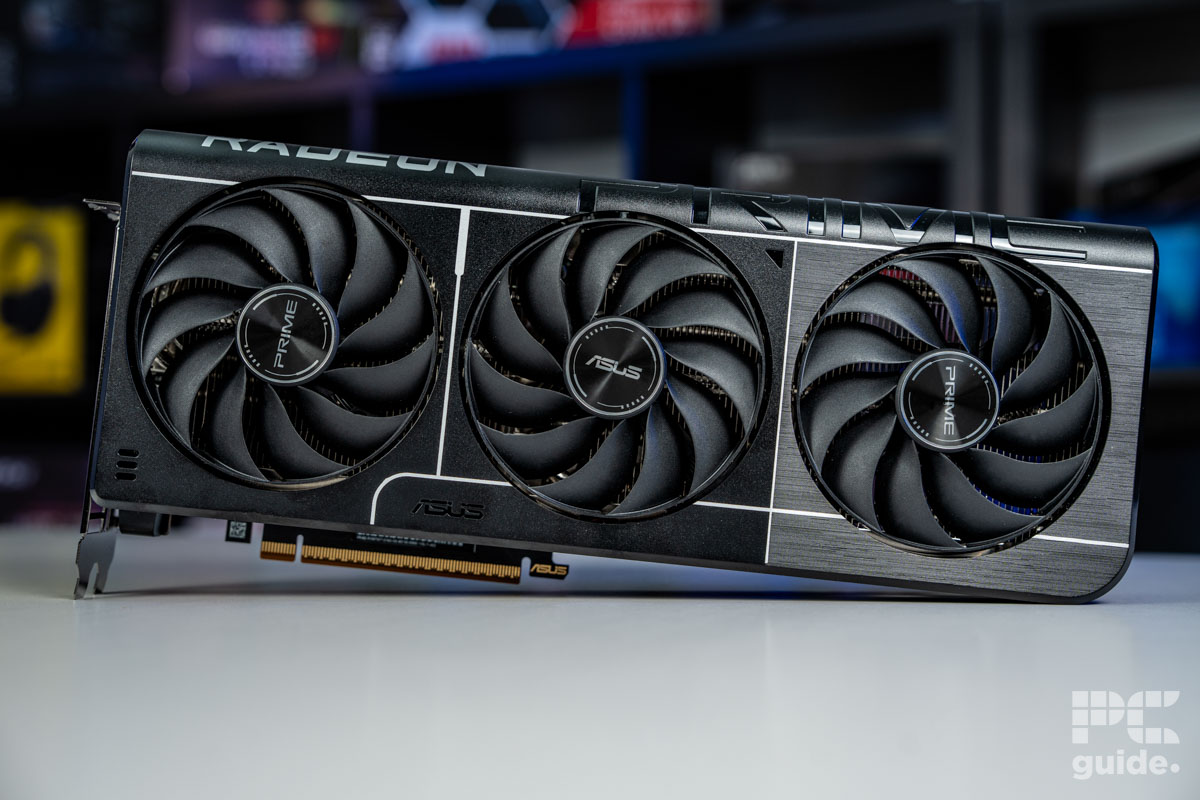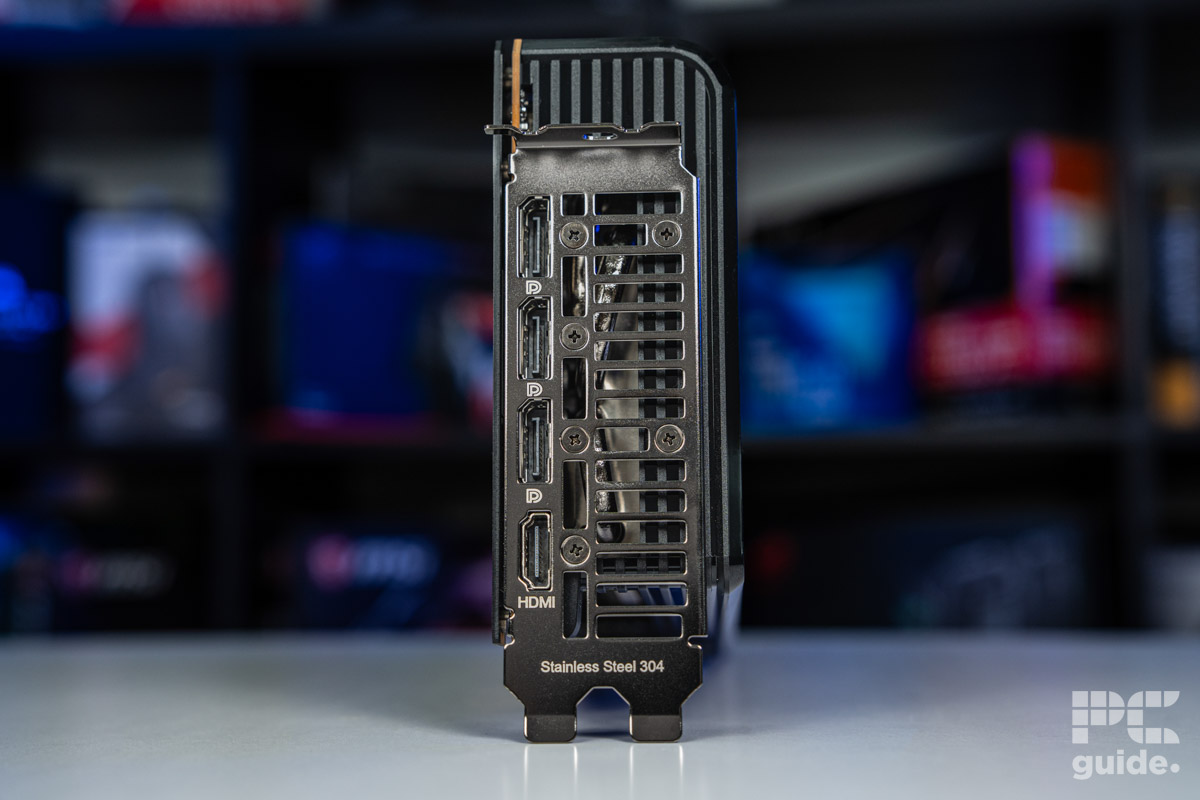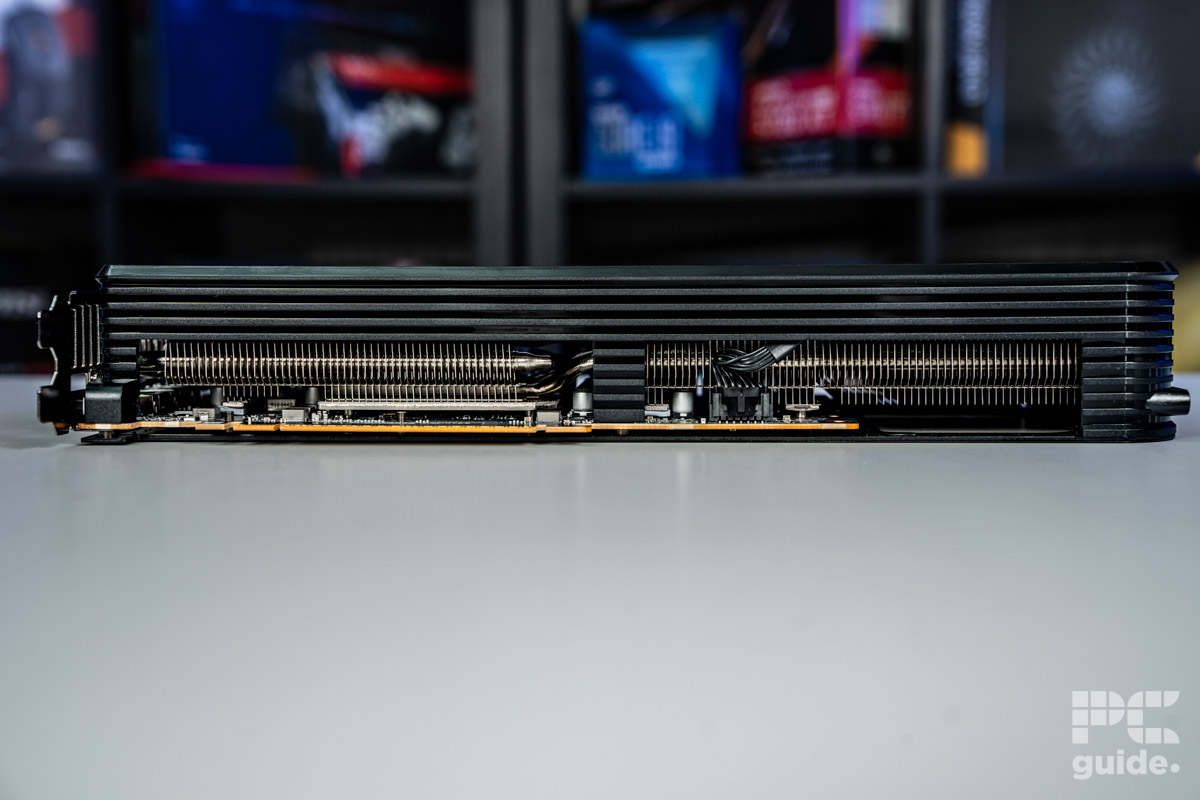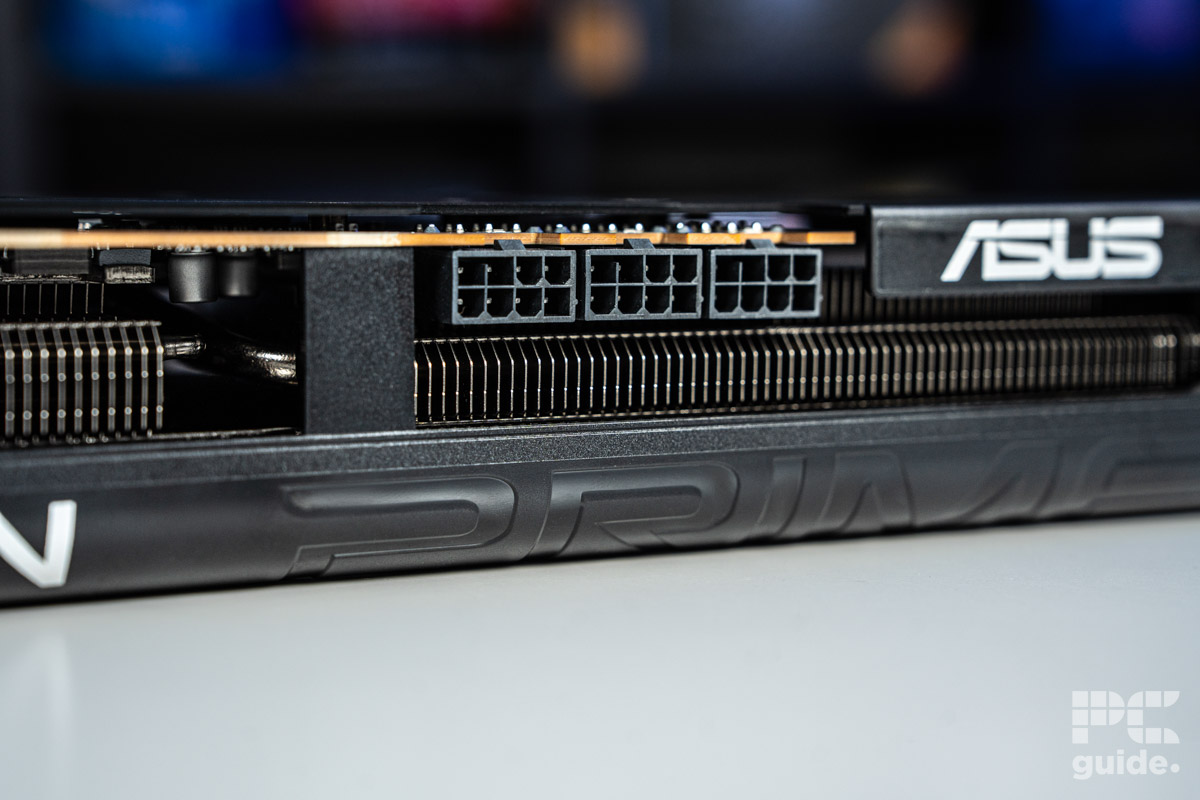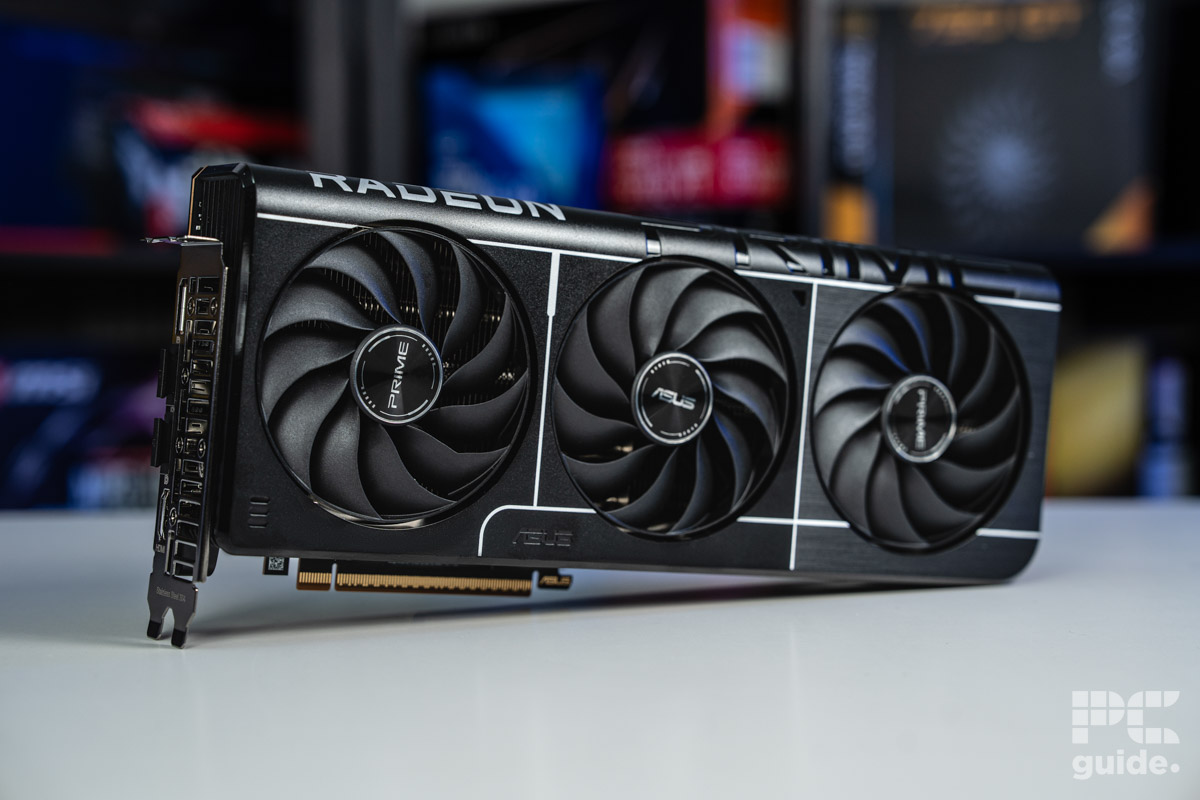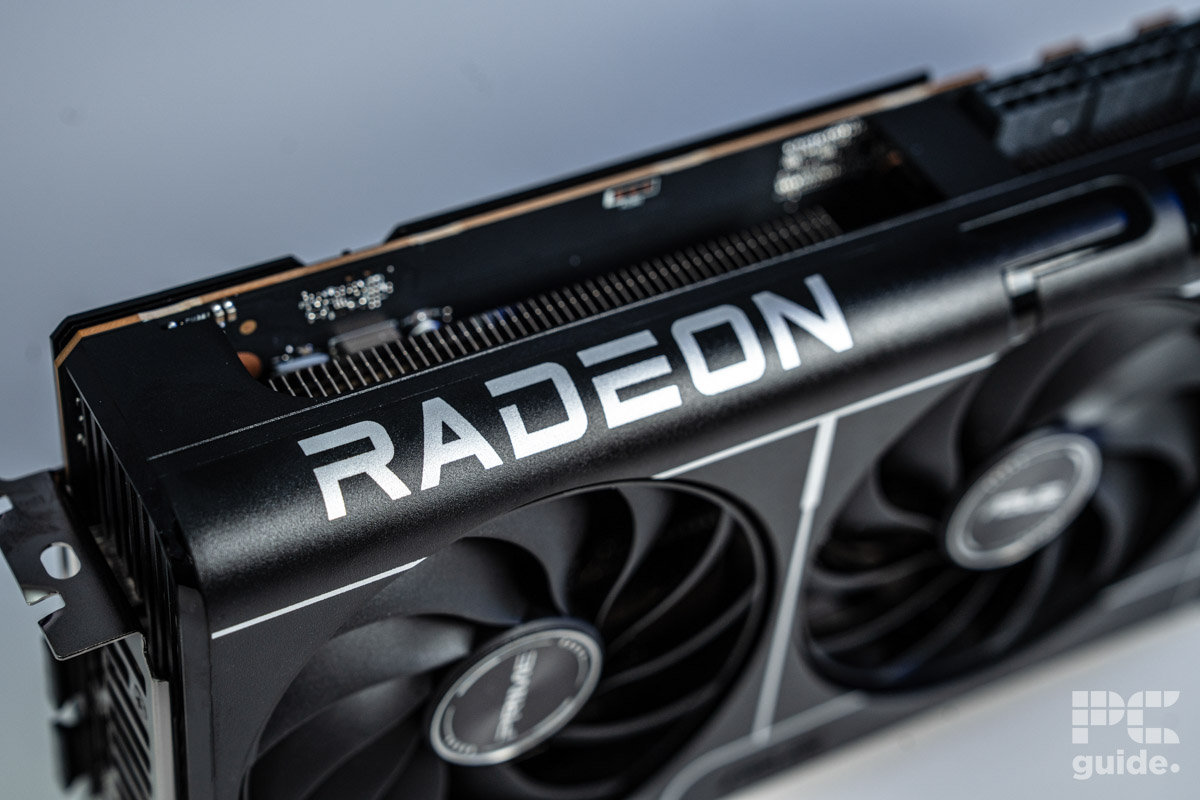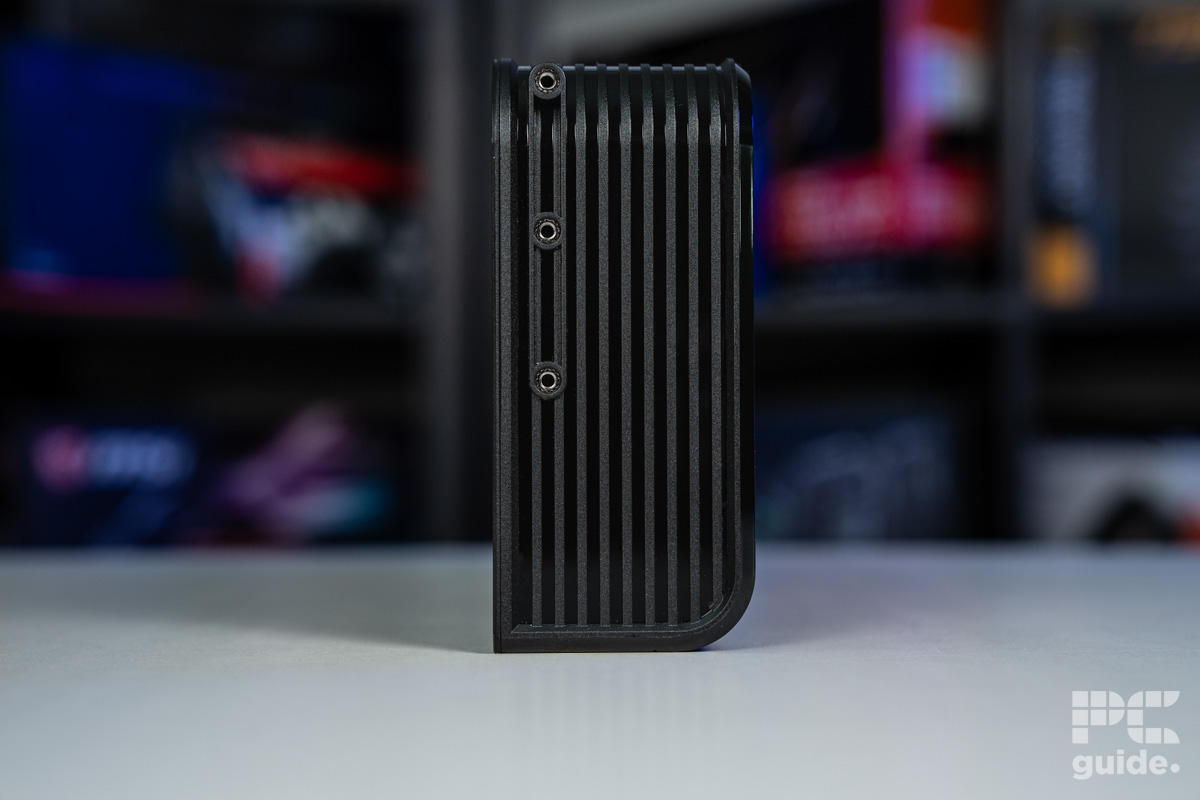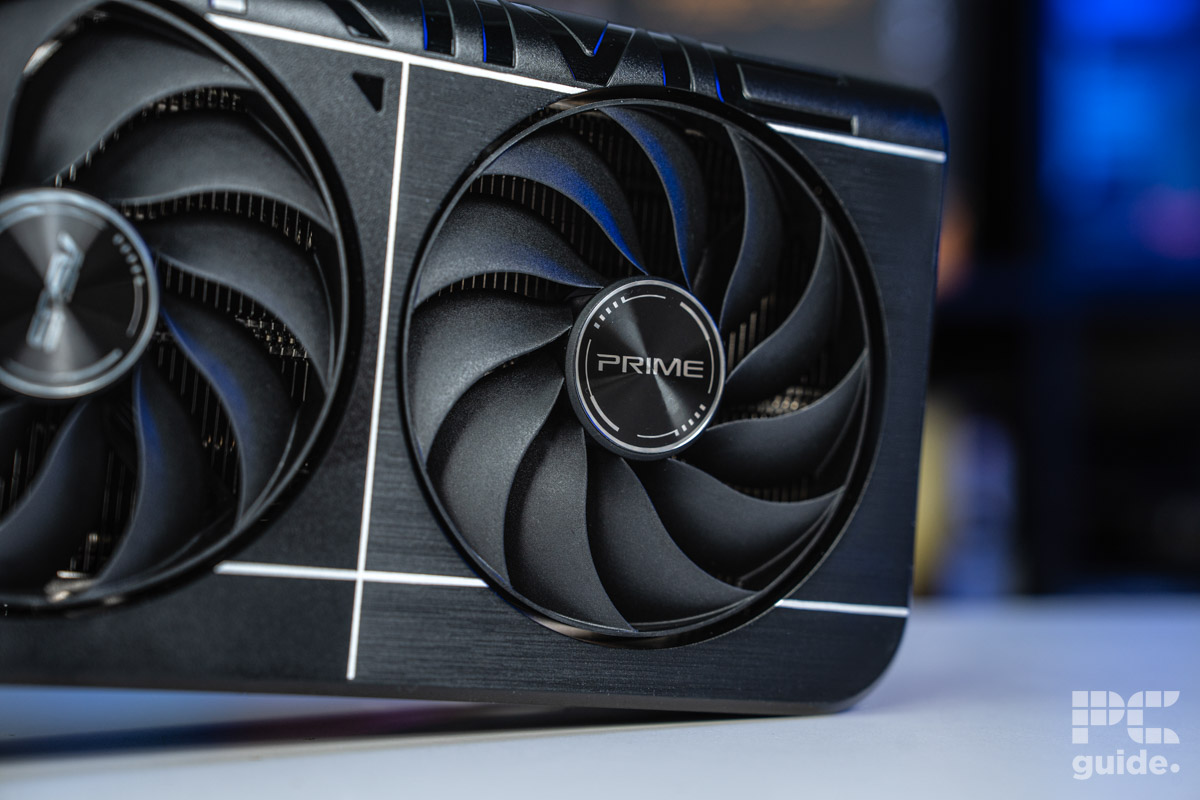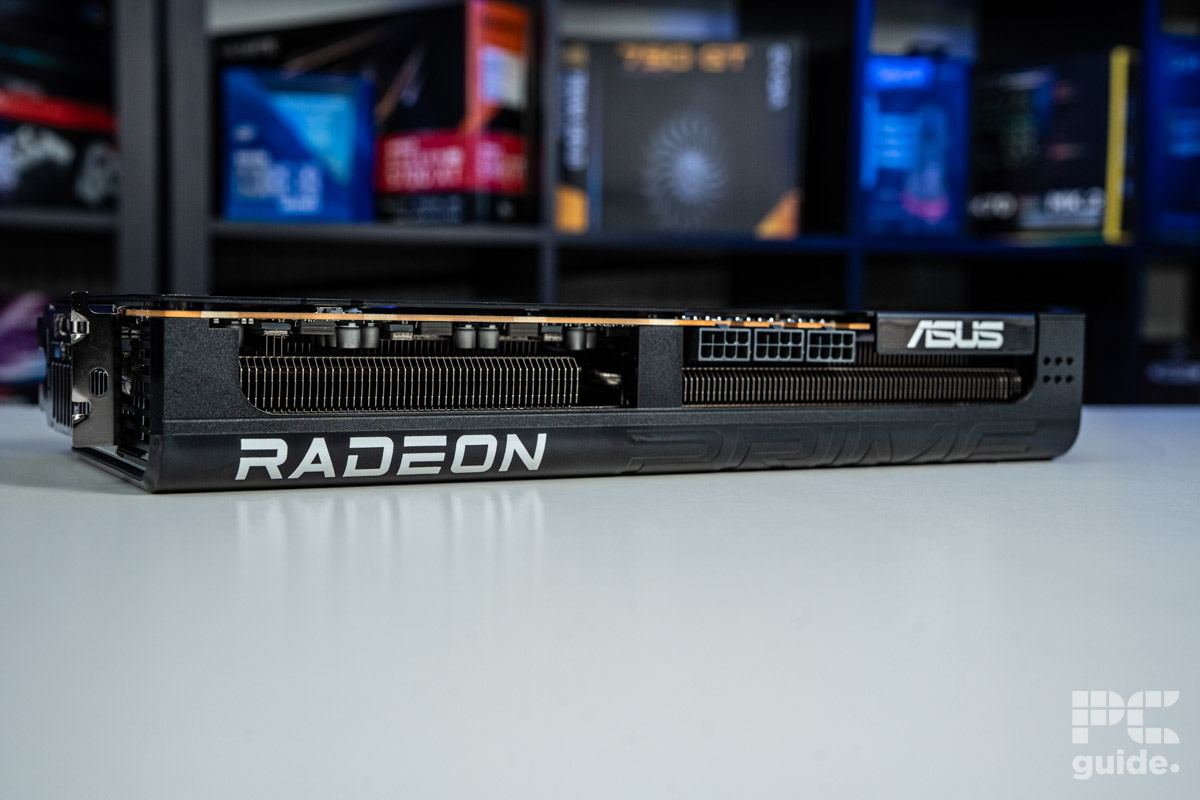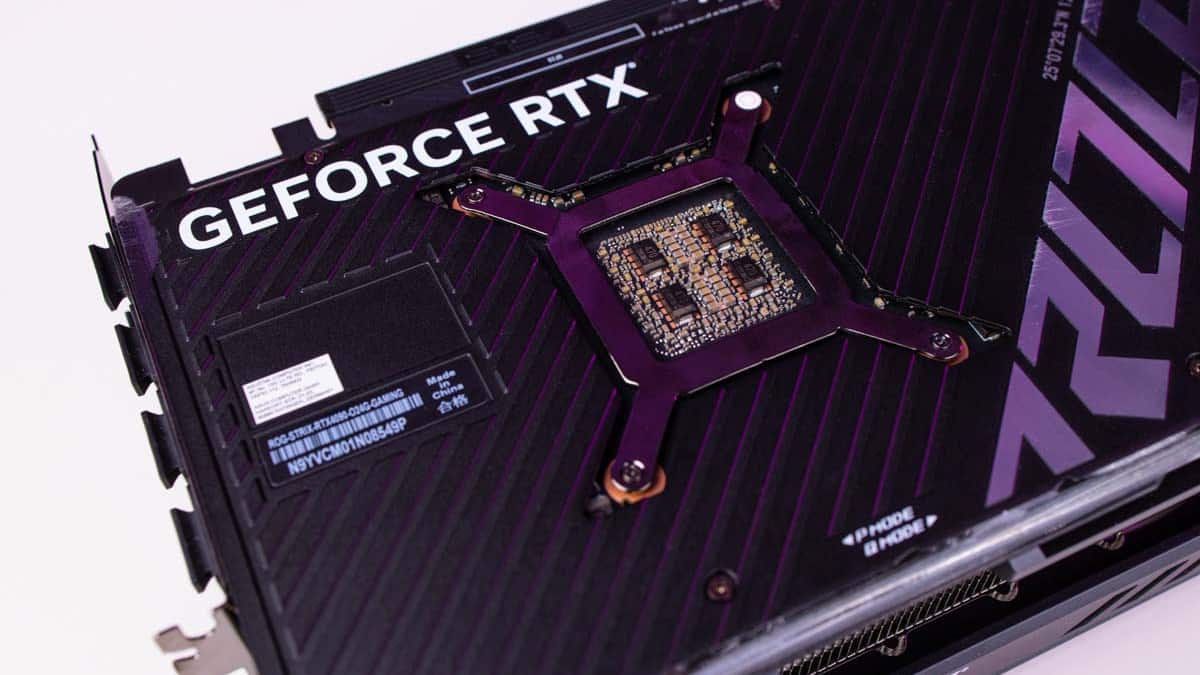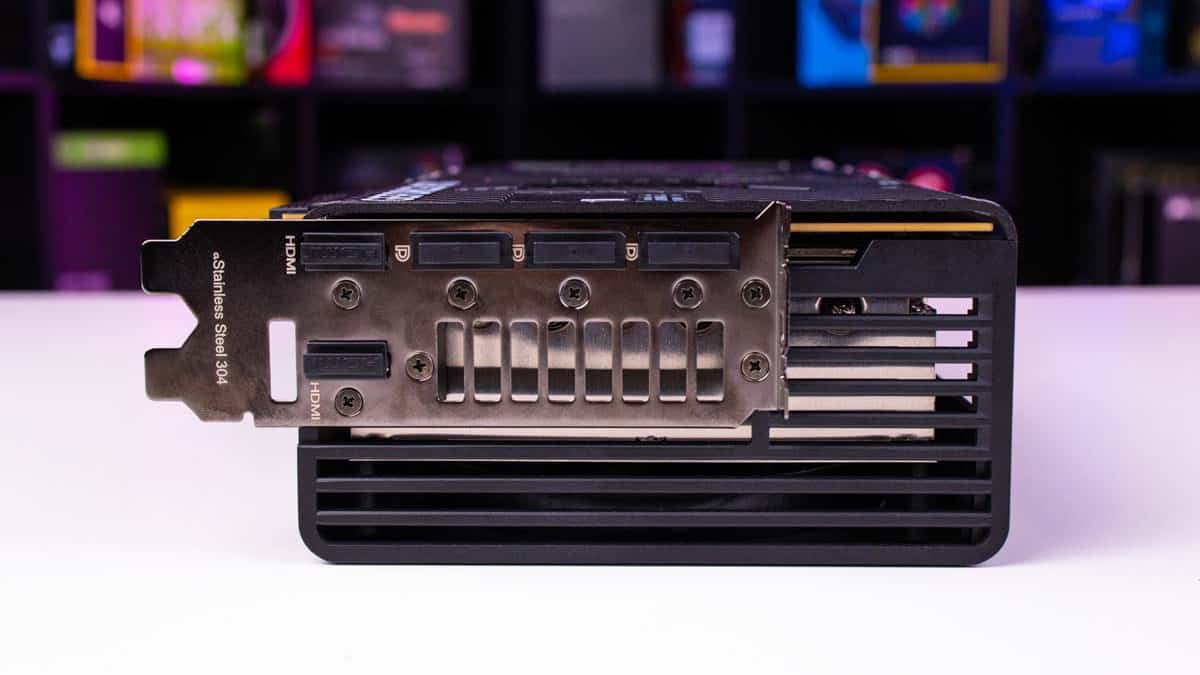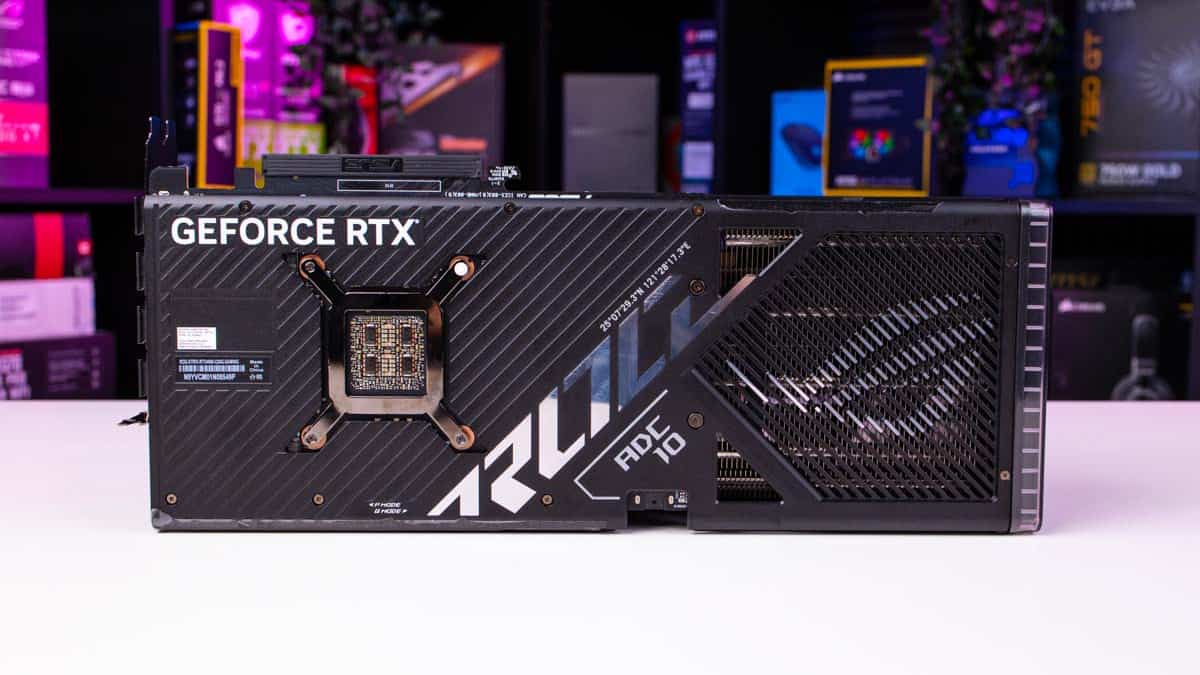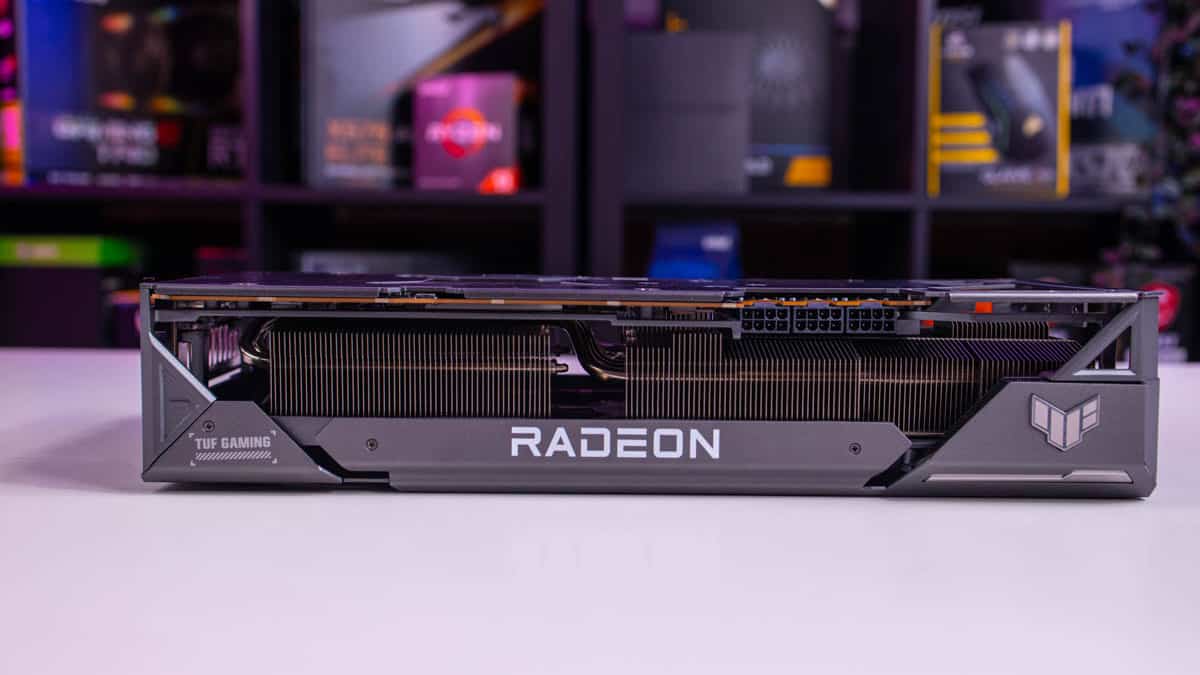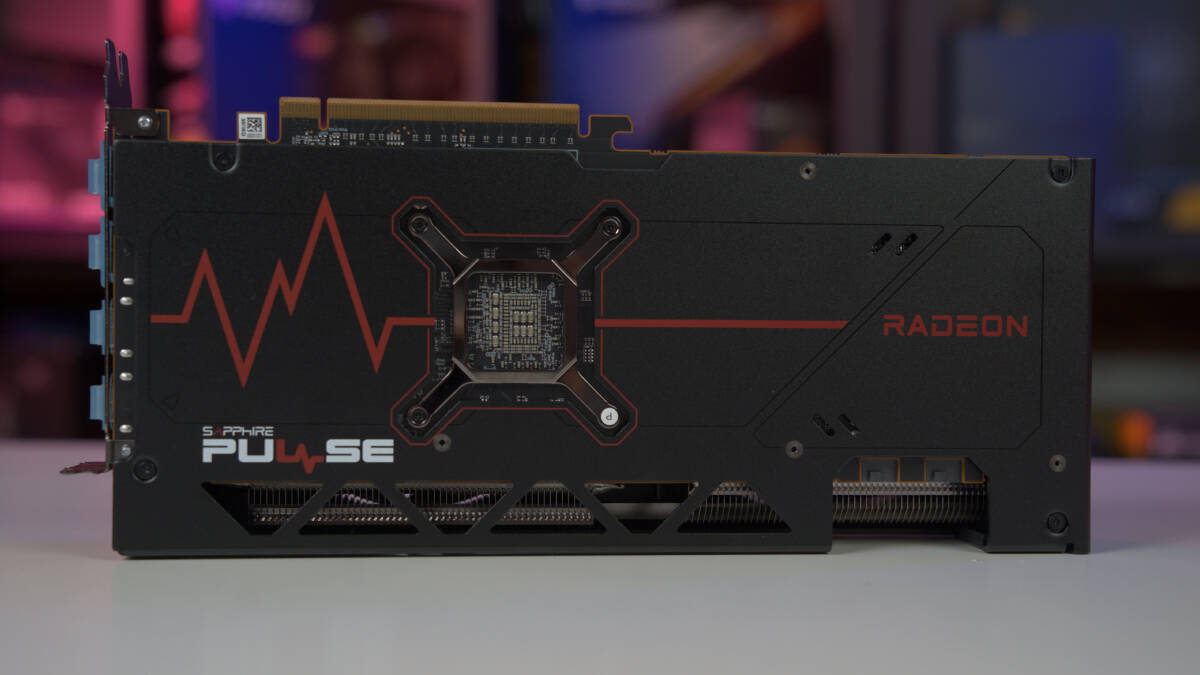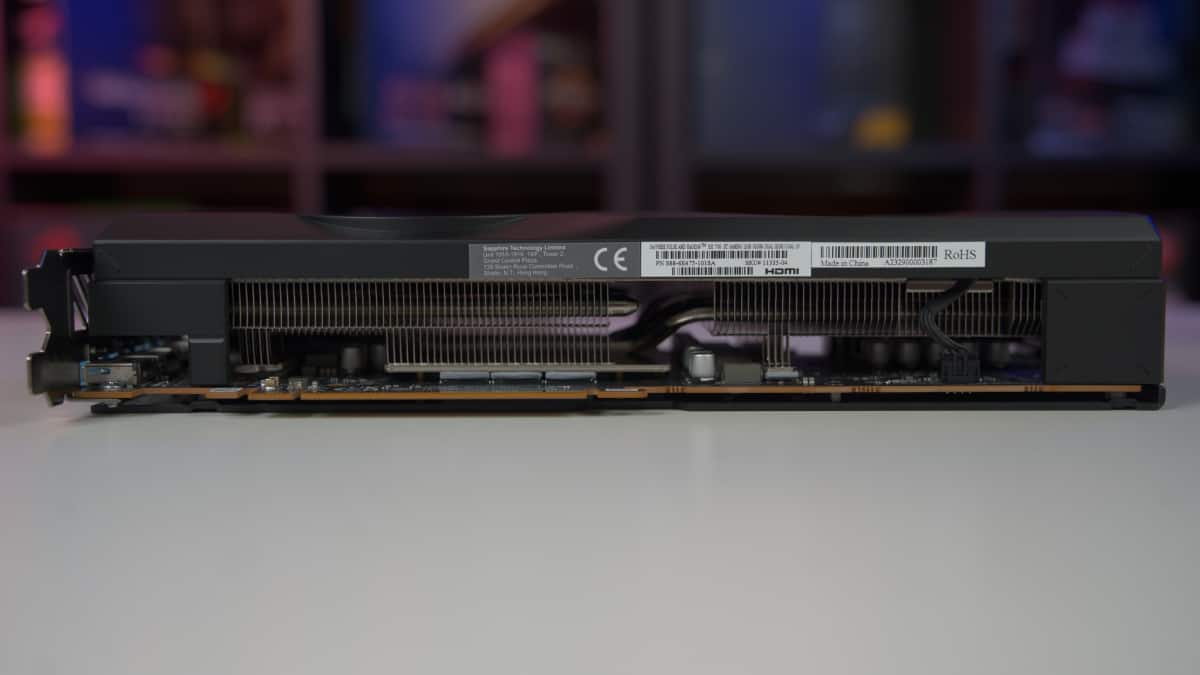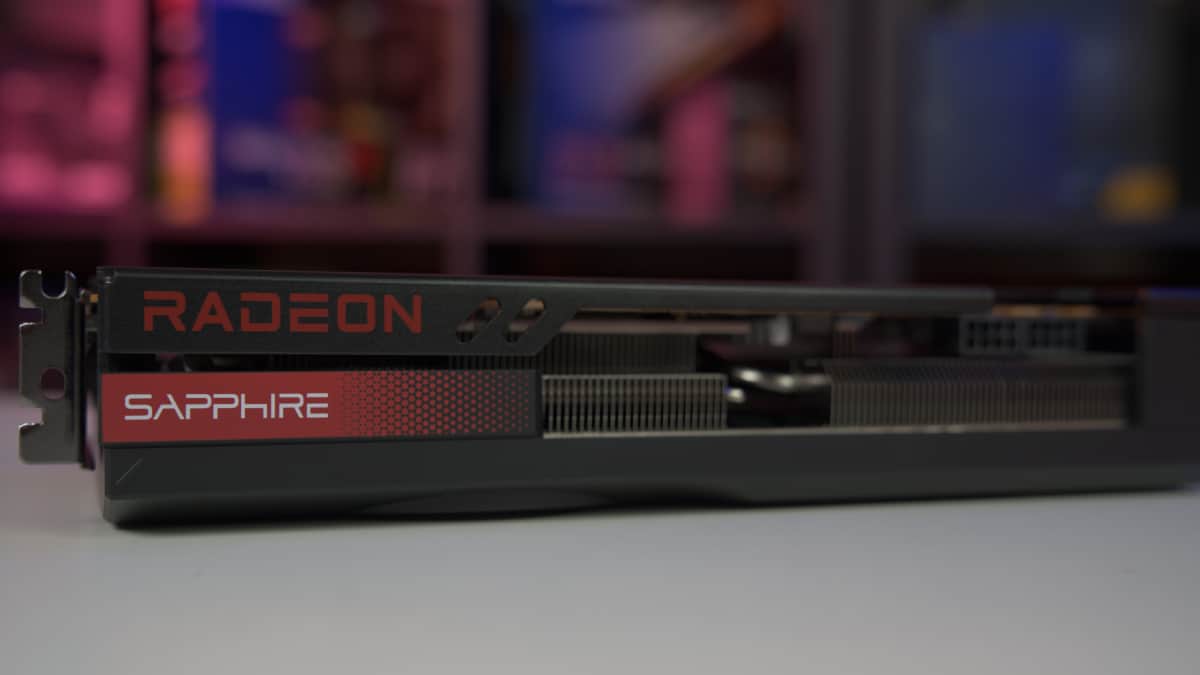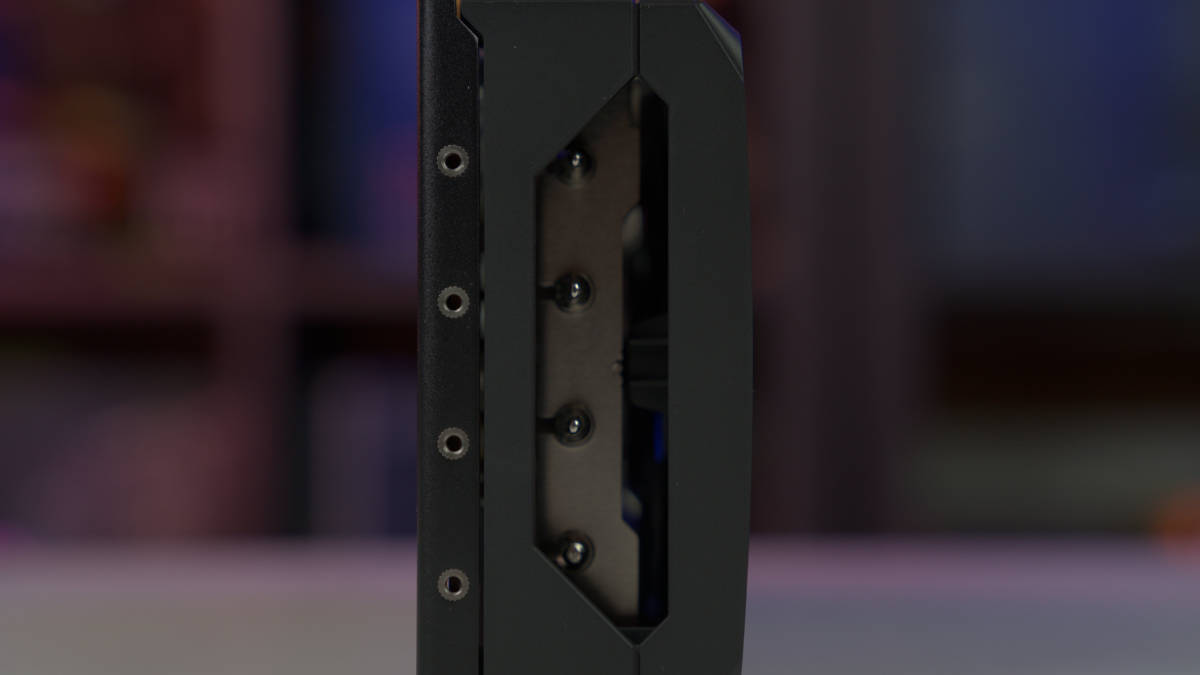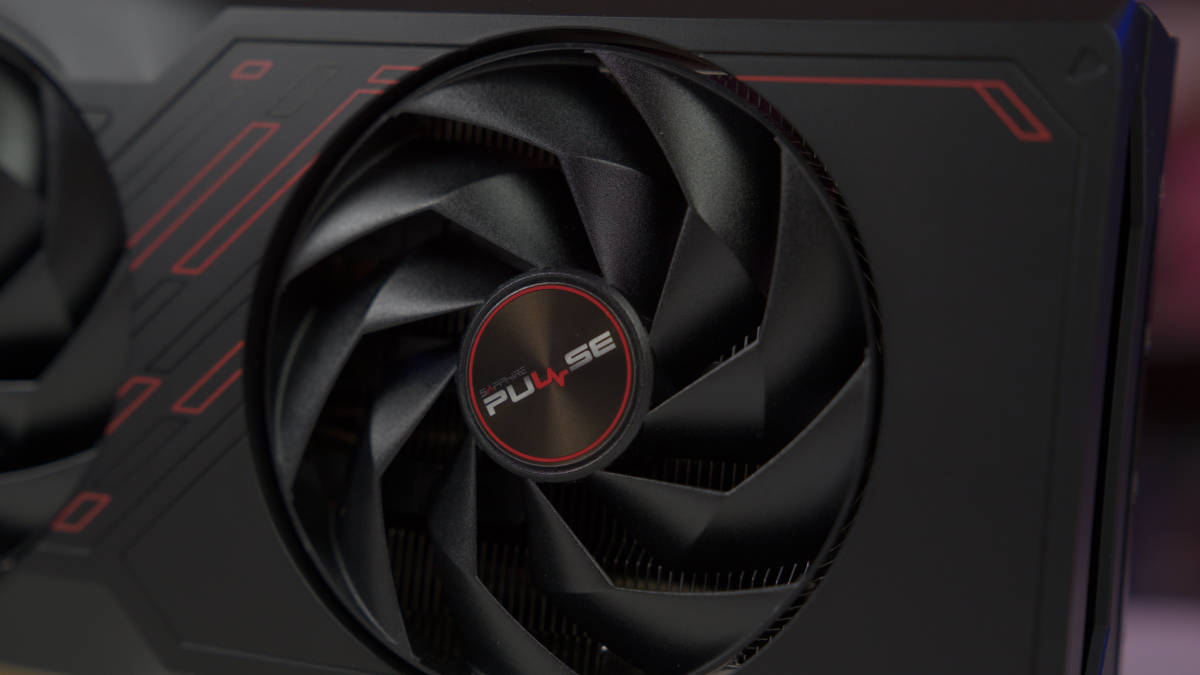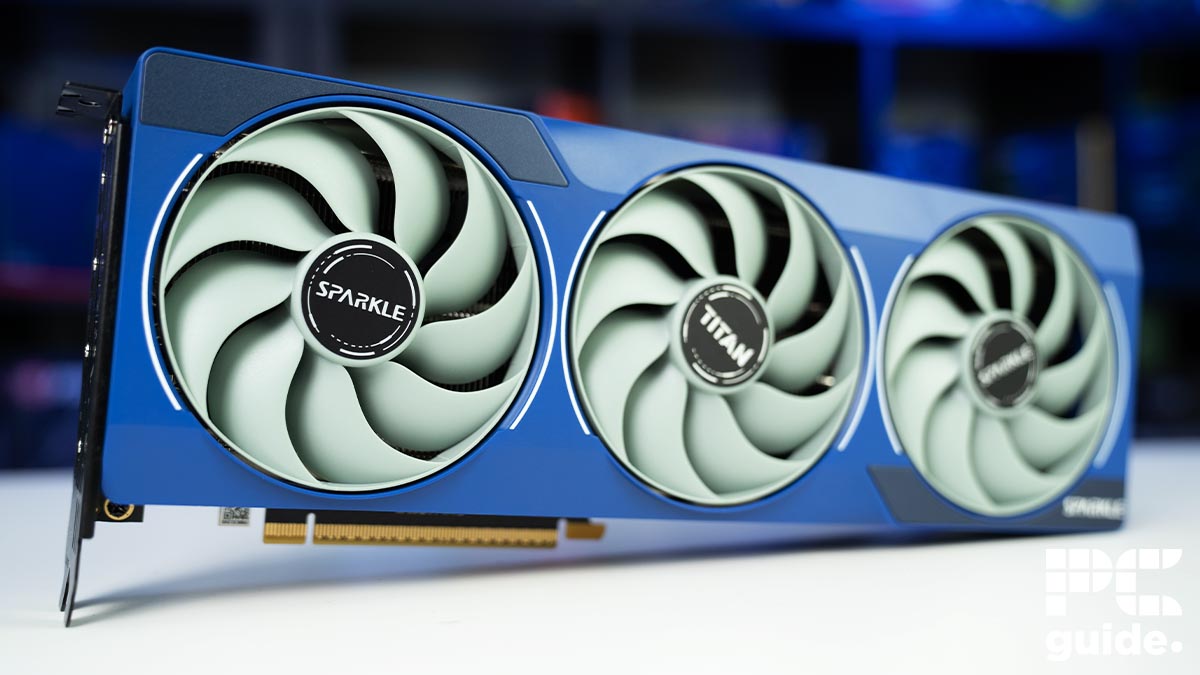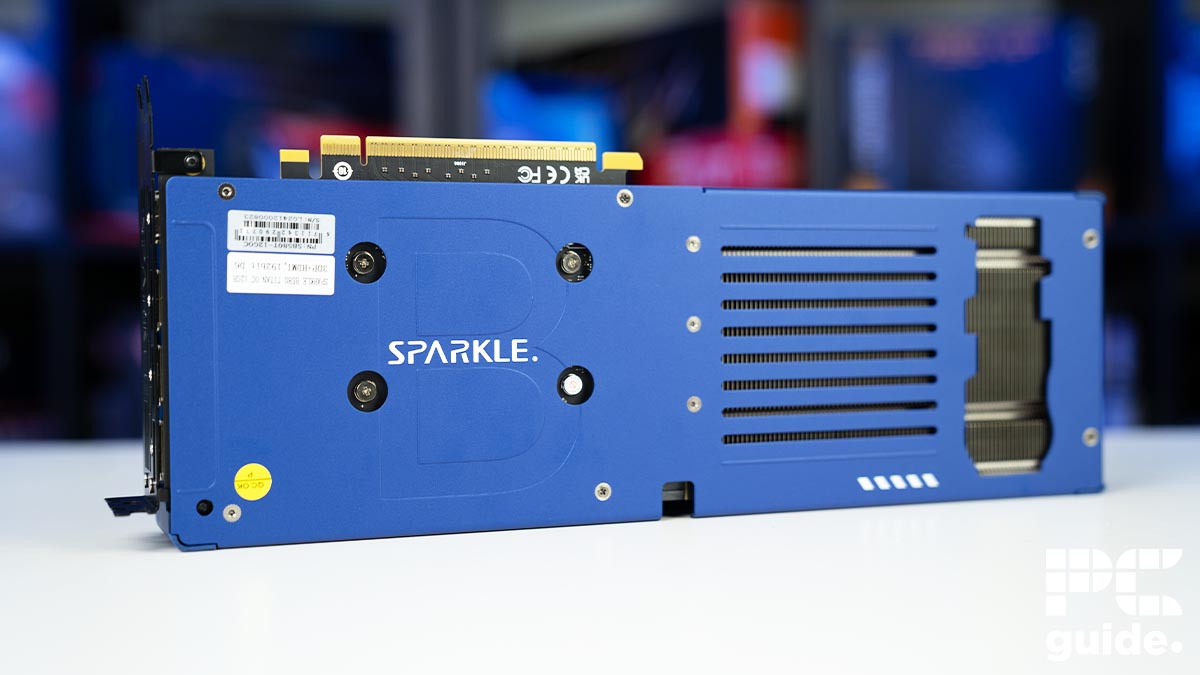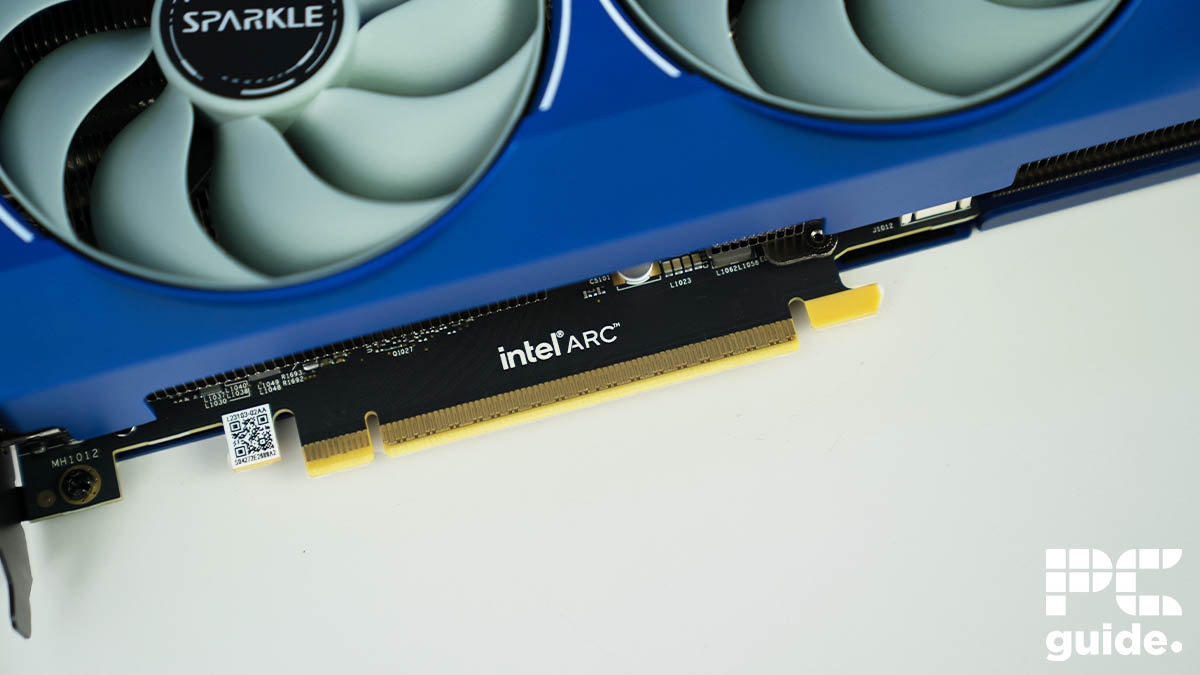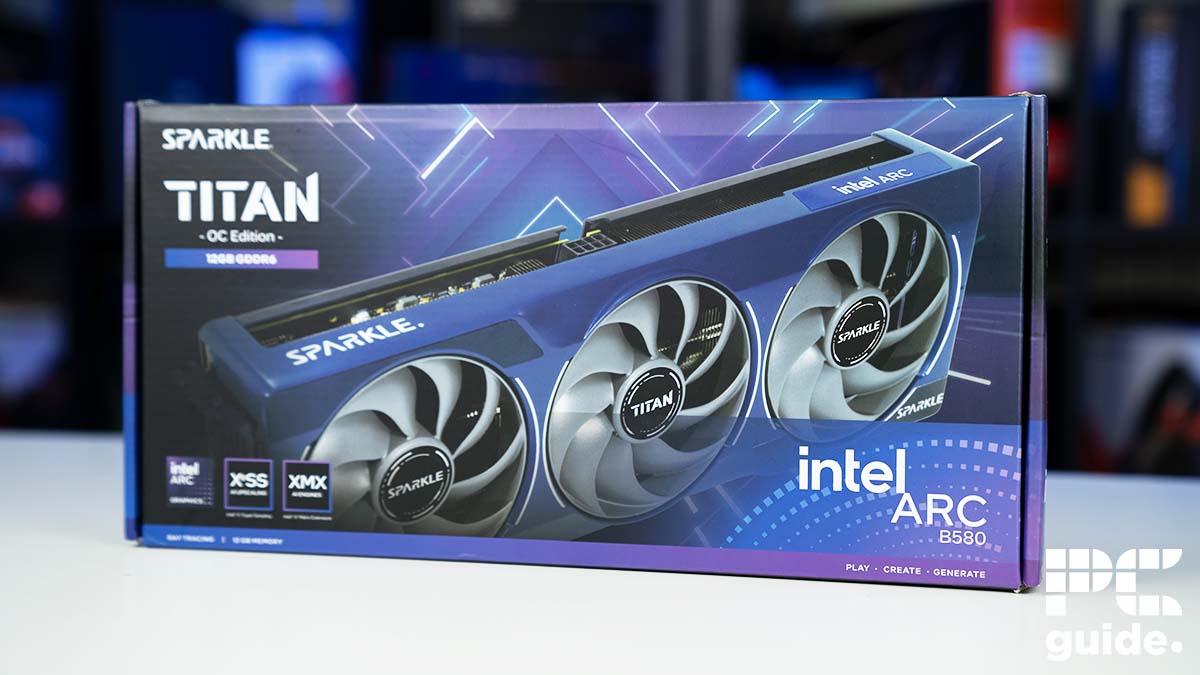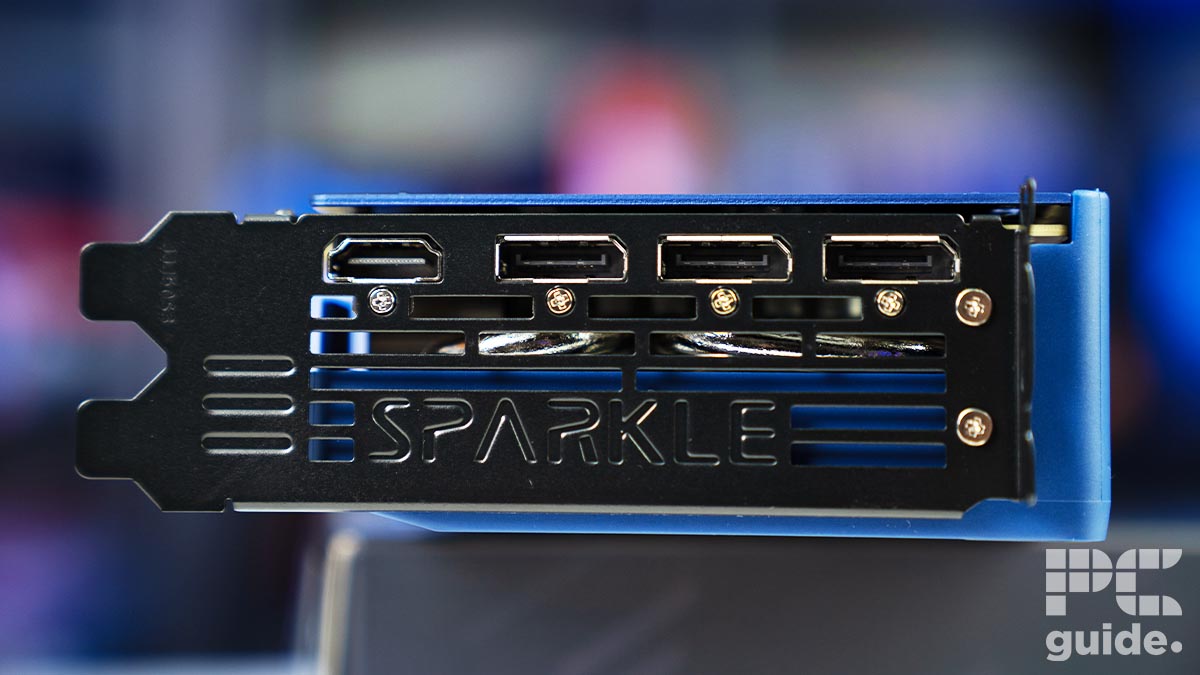Best GPUs for Ryzen 7 5800X3D in 2025 – our top picks
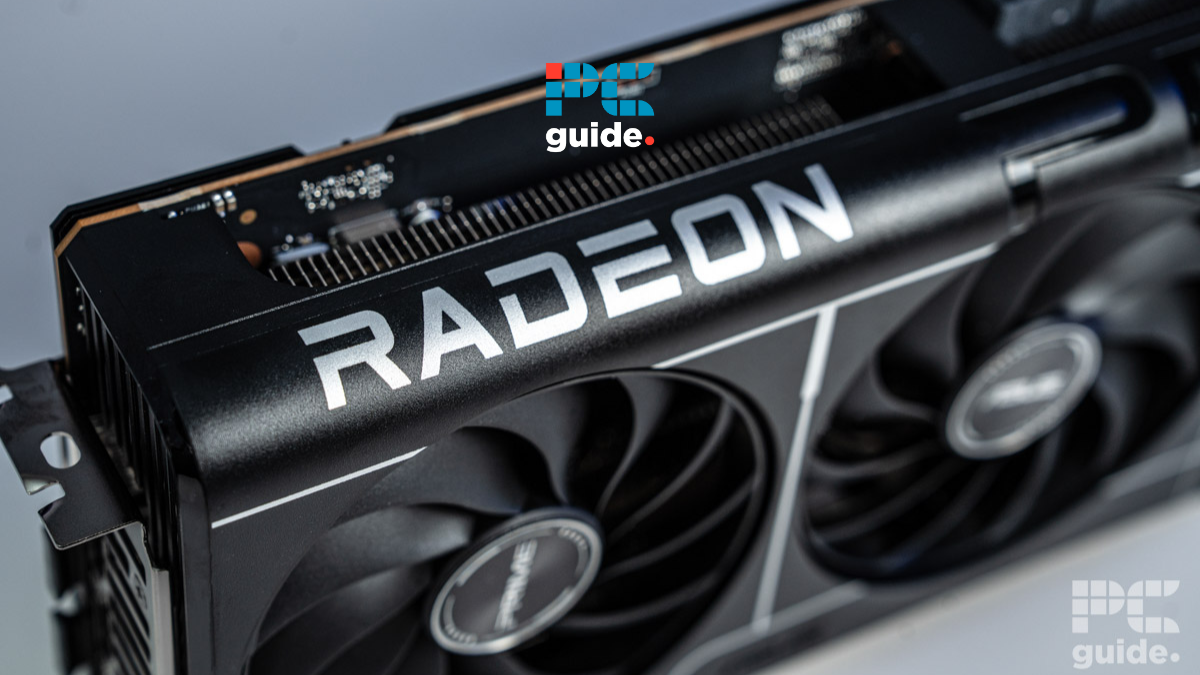
Table of Contents
While the latest X3D chips might be all the hype, and the 9950X3D and 9900X3D are certainly in the spotlight right now, it doesn't take away from the fact that the 5800X3D is still one of the best gaming CPUs out there and capable of handling modern heavy-hitting GPUs.
That said, picking one option to pair with this CPU is easier said than done, as there are many options from major companies, and third-party variants are on top of that. So, it's understandable if the process seems challenging and confusing, but that is where we come in.
We’ve selected a couple of GPUs that we think will work best with the 5800X3D after checking their price, features, and the performance they showcased during our in-house testing. We test all the GPUs we recommend, which allows us to show their real-world performance and only recommend the best.
Our selection is catered to everyone by including high-end, mid-range, and budget options along with their details and pros and cons so that you can choose one that best suits your needs. It’s worth noting that the 50-series GPUs are always an option, and while the stock issues might make it difficult to grab one, with time, the supply should become stable. On the other hand, the Radeon 9000 GPUs have excellent performance and value, which made the community favor them over Team Green’s alternatives.
Products at a glance
-
Best GPU for 5800X3D overall
ASUS Prime RX 9070 XT OC
- GPU: Navi 48 XT
- Stream Processors: 4,096
- VRAM: 16GB GDDR6
- Memory Bus Width: 256-bit
- Base/Game/Boost clock speed: 1,660/2,400/2,970 MHz
- TBP: 304W
-
Best performance GPU for 5800X3D
ASUS ROG Strix RTX 4090 OC
- GPU: AD102
- CUDA cores: 16,384
- VRAM: 24GB GDDR6X
- Memory bus: 384-bit
- Bandwidth: 1,008 GB/sec
- Base clock: 2235 MHz
-
Best AMD GPU for 5800X3D
ASUS TUF Gaming Radeon RX 7900 XTX OC
- GPU: Navi 31
- Stream Processors: 6,144
- VRAM: 24GB GDDR6
- Memory bus width: 384-bit
- Bandwidth: 960 GB/s
- Base clock speed: 1,929 MHz
-
Best mid-range GPU for 5800X3D
Sapphire Radeon Pulse RX 7700 XT
- GPU: Navi 32
- Stream Processors: 3,456
- VRAM: 12GB GDDR6
- Bandwidth: 432 GB/sec
- Memory bus width: 192-bit
- Base clock speed: 1,435 MHz
-
Best budget GPU for 5800X3D
SPARKLE Intel Arc B580 TITAN OC
- GPU: BGM-G21
- Shading units: 2,560
- VRAM: 12GB GDDR6
- Memory bus width: 192-bit
- Bandwidth: 456GB/s
- Base/Boost clock speed: 2,670/2,740 MHz
How we picked
We researched the market and found various options from Nvidia, AMD, and Intel. We filtered those options based on their price, compatibility, performance, and other features, such as DLSS, FSR, and XeSS. On top of that, we also conduct rigorous in-house testing of the cards. This gives us insight into how they'll perform, and we can help you pair them with various CPUs, including the Ryzen 7 5800X3D. We're always updating our list with the latest information, so if there are better pairings than these, we'll be sure to update them, so check back with us. If you’re interested in learning about our testing process in depth, head over to the PC Guide Testing Lab.
Our top picks


- GPU: Navi 48 XT
- Stream Processors: 4,096
- VRAM: 16GB GDDR6
- Memory Bus Width: 256-bit
- Base/Game/Boost clock speed: 1,660/2,400/2,970 MHz
- TBP: 304W
- Great performance even at 4K and reaching RTX 4080 levels
- Excellent MSRP makes it much more appealing against competition
- Incredible improvements over the previous generation
- Plenty of VRAM for the price
- Still falls behind in ray tracing, AI, and creative workloads
- Spiking and high power draw
- Features not as extensive as Nvidia
The Ryzen 7 5800X3D is two generations old now, but that doesn’t mean it can’t be paired with the latest graphics cards. If you’re looking to get a great balance between performance and value, we recommend you check out the RX 9070 XT. This is a mid-range heavy hitter from AMD and stands at the top of the Radeon 9000 lineup.
We’ve tested and reviewed this GPU in-house, and it has exceptional gaming and synthetic performance that is capable of giving its alternatives a run for their money. We reviewed the ASUS Prime variant, which is overclocked by the manufacturer, meaning it can perform a bit better than the base model.
It has a 304W TDP, but when we stress-tested it, the power draw ramped 360W, which is well above the advertised TDP and even peaked over 500W at some points. However, despite that, its power connector showed no signs of giving way, and the GPU remained cool at a 54°C temperature.
After keeping us waiting a few months, AMD's RX 9070 XT seems worth the wait. It offers incredible performance and true 4K gaming for $600.
PC Guide
Paired with the Ryzen 7 9800X3D, it also produced great results as it was able to easily churn out more than 60 FPS in all the titles, but the numbers might be lower, especially the 1% lows, with the 5800X3D. In Doom Eternal, CS2, Indian Jones, and Cyberpunk 2077, we got 228, 110, 101, and 61 FPS at 4K, respectively.
On the other hand, 1440p and 1080p results were also great and should result in better output, as the 5800X3D should be able to easily keep up with the RX 9070 XT. Overall, given the gaming, AI, and synthetic output of this GPU, it is one of the best to pair with the 5800X3D, but you won’t get the same level of productivity as you’d get with the 9800X3D or any other “X” processor.
The 5800X3D and 7800X3D couldn’t match up the productive output of their counterparts, but that changed with the 9800X3D, so if you’ve got workflows other than gaming to take care of, we recommend upgrading to one of the best CPUs for RX 9070 XT.

- GPU: AD102
- CUDA cores: 16,384
- VRAM: 24GB GDDR6X
- Memory bus: 384-bit
- Bandwidth: 1,008 GB/sec
- Base clock: 2235 MHz
- Excellent gaming and synthetic performance
- 24GB of GDDR6X VRAM
- Should last you a while and make for a good investment
- It comes at a premium price point
- It’s not power-efficient and has a TDP of 450W
- It tends to run hot
For one of the best gaming chips out there, it would only make sense to pair it with the best GPU available right now, the RTX 4090. This GPU is at the top of the performance hierarchy, and in our RTX 4090 review, it proved to be a beast at anything you can throw at it.
We tested this GPU in various demanding games like Cyberpunk 2077 and Microsoft Flight Simulator, and it blew through them with little to no difficulty. In Cyberpunk 2077, it had 168, 135, and 74 FPS at 1080p, 1440p, and 4K with Ultra settings.
However, when we enabled Ray Tracing, its 4K performance dropped to 43 FPS, but DLSS 3 came in clutch and raised the framerates to a whopping 133 FPS. This shows the GPU’s raw and AI capabilities and showcases why it is currently the most powerful card in the market.
The same results were seen in the synthetic benchmarks, like in 3DMark, where it managed 228 FPS with DLSS 2 turned on. What this means is that whether you’re an enthusiast gamer or a professional, this GPU should serve well in both scenarios, and it is capable of handling rendering, content creation, machine learning, and more.
The FE RTX 4090 has 16,384 CUDA cores, a base clock of 2.23 GHz, and a boost clock of 2.52 GHz. The test unit that we got was the ASUS ROG Strix variant, which was overclocked to have a 2,610 MHz boost clock, which can be increased to 2,640 MHz with the OC mode. So, it already has impressive specifications, but the factory overclock means better performance across the board.
Whether you want the highest amount of frames possible or want to push ray tracing to the limits, the Nvidia GeForce RTX 4090 impresses without compromise.
PC Guide
It doesn't end there. It also features 24GB of GDDR6X VRAM with a 384-bit memory interface. What this means is that you won't have to worry about games consuming too much memory, and every game should already be at the max settings with this GPU in your corner.
According to Nvidia, this GPU has an average gaming power of 450W, and an 850W PSU is recommended to power it. However, ASUS recommends a 1000W PSU for the ROG variant, which aligns with its overclocked nature and performance. That said, its thermal output should also be significant, and we recommend using powerful 140mm case fans, a well-ventilated casing, and the best PSU for the RTX 4090.
Regarding its size, it has a length of 375.6mm, a width of 149.4mm, and a height of 70.1mm (14.7” x 5.8” x 2.7”). This makes it the largest card out there, even bigger than the Nvidia's Founders Edition card. So, to ensure the PCIe slot doesn't give way under the weight, we recommend using a GPU support bracket to counter GPU sag and promote even weight distribution.
Everything said and done, there are little downsides to having this GPU in your corner, such as its price and thermal output, and a whole lot of positives. So, if you want to experience the best gaming performance, this pairing shouldn't exceed your expectations.
What users say
The users love this graphics card, and its Amazon reviews are filled with praise for its incredible performance. One reviewer said: “The GeForce RTX® 4090 OC Edition boasts an incredible level of performance that pushes the boundaries of gaming realism.” On the other hand it wasn't surprising to find many reviewers claiming that it runs hot and the fans can get noisy under load.

- GPU: Navi 31
- Stream Processors: 6,144
- VRAM: 24GB GDDR6
- Memory bus width: 384-bit
- Bandwidth: 960 GB/s
- Base clock speed: 1,929 MHz
- 24GB of GDDR6 VRAM
- Excellent 1440p and 4K native performance
- Headroom for better results with FSR3
- The Ray Tracing results aren't as great as Nvidia's cards
- It still comes with a hefty price tag
Now, we're moving into the domain of Team Red, and we've got their 7000 series flagship GPU, the RX 7900 XTX. This is the only GPU from AMD that comes close to the RTX 4090, and in our RX 7900 XTX review, it had a stellar performance in our gaming and real-world benchmarks.
We tested its gaming prowess natively in various titles. In Cyberpunk 2077, it had 70 FPS at 4K and 137 FPS at 1440p. In less demanding titles like Counter-Strike, it delivered an impressive 389 FPS at 4K and a jaw-dropping 609 FPS at 1440p. Keep in mind that these results do not factor in AI upscaling technologies like FSR, so you can expect even better performance with that enabled.
As for its real-world performance, it had an excellent score in Fire Strike tests and Port Royal, which is to gauge the Ray Tracing capabilities of the GPU. While its Ray Tracing is not quite at the level of the 4090, we need to remember that this GPU doesn't cost almost $2,000, so some performance differences are bound to be evident. That said, this is an excellent card if you want to spend less but still want a top-notch 4K gaming experience.
Our ASUS TUF RX 7900 XTX is a bit larger than its original model with dimensions of 13.9” x L, 6.23” x W, and 2.86” x H (353mm x 158mm x 71mm). This means it doesn't have a small form factor, and you'll need to check whether your PC case has enough space to hold it comfortably. If not, we recommend upgrading your casing to a larger one to ensure the components don't get cramped, as that can lead to overheating issues.
The AMD Radeon RX 7900 XTX is a stellar graphics card for 4K gaming with enough under the hood to achieve high frame rates natively.
PC Guide
According to AMD, this card has a typical board power of 355W, and they recommend using an 800W PSU with it. However, our ASUS TUF 7900 XTX came overclocked from the factory with a game clock of 2395 MHz and a boost clock of 2565. For reference, the base card has a game and boost clock of 2300 and 2500 MHz. That said, the ASUS card has an OC mode, which further increases these frequencies to a 2455 MHz game clock and a 2615 MHz boost clock.
What this means is it can push its 6144 stream processes even harder due to the increased frequencies and deliver better results across the board. And to make sure this graphics card and other components get the right amount of power, we recommend using the best PSU for RX 7900 XTX.
Overall, given its performance and price point, it’s an amazing GPU if you're interested in 4K gaming and other professional tasks. While it can't exactly match the performance of its competitor’s top card, it won't set you back by almost $2,000 as well.
What users say
According to Amazon reviews, it’s being praised for its excellent performance and value. One reviewer said: “It offers remarkable 1440p and 4K performance with blazing fast frame rates with room to spare.” Another user said: “This is a great card at a fraction of the price from its competition.”
- It comes with a very reasonable price tag
- Excellent 1440p performance
- Capable of pushing 4K in some titles
- Ray Tracing’s performance is lacking
- Not the best 4K results
- The RX 7800 XT only costs a bit more and offers better performance
For our last pick, we went with the RX 7700 XT from AMD as we wanted to provide an option for people who want maximum value and wanted to move away from $1000+ gaming beasts. In our RX 7700 XT review, it had great 1440p and 4K performance despite being a mid-range GPU.
In AC Valhalla at ultra settings, it delivered 102 and 59 FPS at 1440p and 4K, respectively. On the other hand, more demanding titles like Cyberpunk 2077 had 79 and 36 FPS in the same resolutions. So, while it can push 4K, the optimization of the titles is a massive factor, but you can always use FSR to boost the framerates.
Doom Eternal, a well-optimized title, had excellent results with 170, 128, and 63 FPS at 1080p, 1440p, and 4K with Ray Tracing enabled.
The RX 7700 XT features 3456 stream processors, which are the same as Nvidia's CUDA cores, a game clock of 2171 MHz, a boost clock of 2544 Mhz. On top of that, it has 12GB of GDDR6 VRAM with a 192-bit memory interface. What these specifications mean is that it should be able to handle games at various resolutions and deliver similar results in real-world scenarios, which is exactly what we experienced during our testing.
The AMD Radeon RX 7700 XT is a solid graphics card overall with its respectable memory pool, strong gaming performance, and a competitive price point.
PC Guide
Regarding its size, it has dimensions of 11” x H, 5” x W, and 2” x H (279mm x 127mm x 50mm). What this means is that it isn't as large as some guides on this list but it would still be ideal to check the space inside your casing to avoid any installation issues.
According to AMD, it has a TDP of 245W seems relatively low but these cards generally run hot and we recommend using the best thermal paste and installing the case fans in the right orientation to promote efficient cross flow and heat dissipation.
It also leverages technologies like AMD Smart Memory Access which gives the processors full access to the GPU, resulting in enhanced performance as some barriers are reduced from the equation.
Overall, this is an excellent GPU to pair with the Ryzen 7 5800X3D; it costs less than $500 and is capable of pushing 4K in some titles, which sounds like a win-win situation.
What users say
According to Amazon reviews, it has excellent 1440p performance and runs quietly. One reviewer said: “This card has worked beautifully for everything I’ve tried. It won’t run 4k games fast, but 1080p and 1440p usually work quite well.”

- GPU: BGM-G21
- Shading units: 2,560
- VRAM: 12GB GDDR6
- Memory bus width: 192-bit
- Bandwidth: 456GB/s
- Base/Boost clock speed: 2,670/2,740 MHz
- Plenty of VRAM in comparison to the competition
- Great price to performance
- HDMI 2.1 and DP 2.1 are available
- Only Gen 4 x8 PCIe – may be an issue for older motherboards
- Slightly more expensive than reference card
- Still occasional troubles in older games specifically
For those who want the maximum bang for their buck, we recommend going for the Intel Arc B580. The Ryzen 7 5800X3D is a great gaming processor, meaning it should be able to keep up with the B580 at 1080p and 1440p, letting the B580 perform at its best.
In our Sparkle Intel Arc B580 Titan OC review, we paired it with the 5800X3D’s successor, the 7800X3D, and we got excellent in-game and synthetic results. That being said, in Cyberpunk 2077, a graphically demanding game, we got 94 FPS at 1080p and 62 FPS at 1440p without enabling XeSS 2 or XeFG. Besides that, it was also able to run Doom Eternal and Shadow of the Tomb Raider at 4K with 90 and 54 FPS, respectively.
So, not only is this graphics card more powerful than the RTX 4060 and the RX 7600 XT, but it also costs less and can push 4K without much issue, but that depends on the title. These results were with the 7800X3D, and there is no doubt that with the 5800X3D, the gaming performance should also be very smooth.
In direct comparison to the B580, you can consider the RTX 4060 and RX 7600. Choosing between these is the most likely scenario when building your PC with a similar price point. But the performance isn't quite the same, and the B580 seemingly beats them both out for the most part for cheaper.
PC Guide
The Intel Arc B580 has 20 Xe cores powering it, which run at 1,700 MHz normally and have a 2,740 MHz boost clock speed. However, the card that we reviewed has the option to go further to 2,800 MHz, meaning even better performance, but at the cost of a higher TDP of 210W and, no doubt, more thermal output as well.
So, depending on your region, your build might be fine as it is, but if you’re located in a hot region, you’ll need to invest in powerful fans like the best 140mm fans or the best airflow PC case to promote efficient cross ventilation and keep the GPU and other components cool.
Overall, the Intel Arc B580 is an excellent addition to the budget and mid-range GPU market segment and has disrupted the hold of Nvidia and AMD. However, that means better products for the consumer and you can now enjoy high-quality and smooth gaming without spending hundreds of dollars on a GPU with only 8GB VRAM.
How to select the best GPU for Ryzen 7 5800X3D
Selecting a GPU for any processor sounds like a simple task, but a handful of factors come into play, and ones you need to consider before making a decision. Spending your money on the most decked-out options isn't wise, as unless you have an enthusiast build, you won't need all that firepower. So, to help you make an informed decision, we've listed some of the factors below.
Budget
When it comes to building a PC, we want everything with the latest bells and whistles, but those components cost an arm and a leg. So, to ensure you don't overspend on a GPU, you won't need to. It’s better to cut through the options with your budget in mind.
This should give you a list of GPUs that you can afford. Then, it’s just a matter of picking the one that offers the best performance and value.
Thermal output
The 5800X3D is a powerful gaming processor that can handle almost any GPU of today, and that means while you'll get good gaming results, the more powerful the GPU is, the more power it needs and the higher its thermal output is.
While considering this, it’s also crucial that you factor in the ambient temperature and your casing because these aspects will also impact the GPU’s running temperature. For example, if your casing is cluttered, the fans aren't installed with the right orientation, or you're located in a hot region, the base temperature of the components will be high. So, ensure you have enough space in your PC case for the GPU and adequate cross ventilation.
Performance
The Ryzen 7 5800X3D is a great gaming CPU, but its professional prowess isn't at the same level as AMD's “X” CPUs. So, if you're building a PC for content creation or other professional tasks, you might not get the best results regardless of which GPU you pair it with.
On the other hand, this CPU shouldn’t disappoint when paired with any GPU if you want the best gaming experience across various resolutions, whether it’s 4K single-player games or action-packed competitive shooters. However, for 4K gaming, we recommend options like the RX 7900 XT as they performed excellently during our in-house testing.

